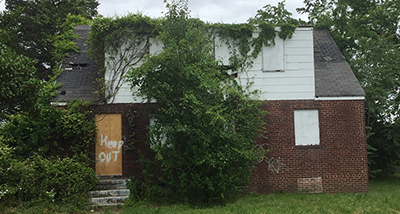
‘Zombie’ Foreclosures Up; Remain Small Portion of Housing Market

ATTOM, Irvine, Calif., reported 1.3 million residential properties in the United States sit vacant, representing 1.26 percent, or one in 79 homes, across the nation.
The company’s 4th Quarter Vacant Property and Zombie Foreclosure Report said 284,423 residential properties in the U.S. were in the process of foreclosure in the fourth quarter, up 5.2 percent from the third quarter and up 27.4 percent from a year ago.
Rich Sharga, executive vice president of market intelligence with ATTOM, said a growing number of homeowners have faced possible foreclosure since a nationwide moratorium on lenders pursuing delinquent homeowners, imposed after the Coronavirus pandemic hit in 2020, was lifted at the end of July 2021.
“The government’s foreclosure moratorium dramatically reduced the number of properties in foreclosure,” said Rick Sharga, executive vice president of market intelligence at ATTOM. “Vacant and abandoned properties were among the few homes that could still be foreclosed on during the moratorium, so the number of zombie properties shrank as well. Now that the foreclosure ban has been lifted, we’re likely to see a gradual return to pre-pandemic levels.”
The report said among those pre-foreclosure properties, 7,722 are zombie foreclosures (pre-foreclosure properties abandoned by owners) in the fourth quarter, up 0.2 percent from the prior quarter and 3.9 percent from a year ago. The count of zombie properties has grown in each of the last three quarters.
The report said despite the increase, the number of zombie-foreclosures remains historically low, representing just a tiny segment of the nation’s total stock of 100.1 million residential properties. Just one of every 12,963 homes in the fourth quarter is vacant and in foreclosure, meaning that most neighborhoods still have no such properties. That ratio is almost exactly the same as in the third quarter, although up 2.5 percent from one in 13,292 a year ago.
The portion of pre-foreclosure properties that have been abandoned into zombie status, meanwhile, continues to decline, from 3.3 percent a year ago to 2.8 percent in the third quarter and 2.7 percent in the fourth quarter.
Sharga said the latest trends – zombie foreclosure numbers up slightly but remaining tiny – again reflect one of many high points from a housing market that has seen 11 years of nearly uninterrupted gains. Median home values nationwide have more than doubled since 2012, home-seller profits have shot up over 50 percent and the vast majority of homeowners have equity built up in their homes. “Those forces provide enormous incentive for owners behind on their mortgages to do everything they can to avoid abandoning their properties even as foreclosure activity increases,” the report said.
ATTOM said 7,722 residential properties facing possible foreclosure have been vacated by their owners nationwide in the fourth quarter of 2022, up slightly from 7,707 in the third quarter of 2022 and from 7,432 in the fourth quarter of 2021.
While zombie foreclosures continue to be few and far between in most neighborhoods around the U.S., the biggest increases from the third quarter to the fourth quarter in states with at least 50 zombie properties are in Kansas (zombie properties up 32 percent, from 44 to 58), Nevada (up 25 percent, from 81 to 101), Connecticut (up 15 percent, from 65 to 75), Georgia (up 15 percent, from 72 to 83) and Indiana (up 13 percent, from 239 to 270).
“Low vacancy rates are also a major factor in there being few zombie homes,” Sharga said. “And with demand from both traditional homebuyers and investors still relatively strong, and the inventory of homes for sale still very low, vacancy rates for residential homes is about as low as it’s ever been,”
